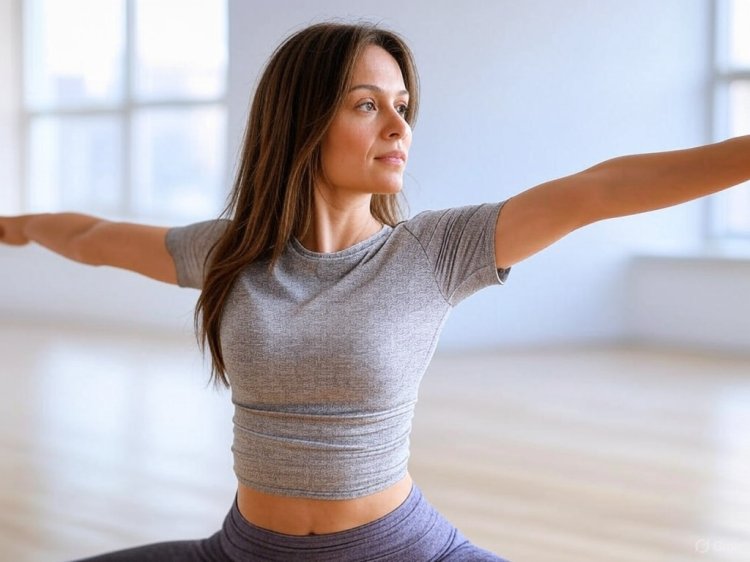Getting Started with Yoga to Boost Flexibility

Yoga, an ancient practice blending movement, breath, and mindfulness, is a fantastic way to improve flexibility while enhancing overall well-being. For beginners, starting yoga can feel intimidating, but with a simple approach, anyone can ease into it and unlock greater mobility. Here’s a guide to help you begin your yoga journey with a focus on flexibility.
Why Yoga for Flexibility?
Flexibility—the range of motion in your joints and muscles—tends to decline with age or sedentary habits, leading to stiffness and injury risk. Yoga addresses this by gently stretching muscles, tendons, and ligaments. A 2022 study in The Journal of Physical Therapy Science found that just eight weeks of yoga improved hamstring flexibility by 20% in beginners. Beyond physical benefits, yoga’s mindful approach reduces stress, which can ease muscle tension and enhance your body’s ability to stretch. Whether you’re aiming to touch your toes or simply move more freely, yoga offers a low-impact path to progress.
Setting Up for Success
Before your first pose, create a welcoming environment. You don’t need much: a yoga mat, comfortable clothes, and a quiet space. If a mat isn’t available, a soft surface like a carpet works. For guidance, explore free beginner videos on platforms like YouTube or apps like Yoga for Beginners. Choose classes labeled “gentle” or “hatha,” which emphasize basic poses and alignment—ideal for flexibility. Start with 10-15 minute sessions to avoid overwhelm, aiming for two to three practices weekly.
Key Poses to Build Flexibility
Begin with simple poses that target major muscle groups. Here are three to try:
-
Downward-Facing Dog: This pose stretches hamstrings, calves, and back. Start on all fours, lift your hips toward the ceiling, and press your heels gently toward the floor. Hold for 5-8 breaths.
-
Seated Forward Fold: Sit with legs extended, reach toward your toes, and fold forward from your hips. This stretches hamstrings and lower back. Use a strap or towel around your feet if you can’t reach. Hold for 8-10 breaths.
-
Cat-Cow Stretch: On all fours, alternate arching your back (cow) and rounding it (cat) with your breath. This warms up the spine, improving its flexibility. Flow through 6-8 cycles.
Focus on slow, controlled movements and never force a stretch—mild discomfort is okay, but pain isn’t. Over time, your range of motion will expand.
Breathing and Consistency
Yoga’s magic lies in pairing movement with breath. Inhale to prepare or lengthen; exhale to deepen a stretch. This conscious breathing, or pranayama, relaxes muscles, making them more pliable. A 2023 study in Frontiers in Physiology noted that diaphragmatic breathing during yoga increased muscle elasticity by 15% compared to static stretching alone. Consistency is equally vital: practicing a few times a week builds gradual improvements. Track your progress—maybe note how much closer you get to touching your knees to your chest each month—to stay motivated.
Listening to Your Body
As a beginner, respect your limits to avoid injury. Props like blocks or cushions can support poses, making them accessible. If a pose feels too intense, modify it or skip it. Rest when needed, and consider joining a local beginner class for hands-on guidance from an instructor. Yoga is about progress, not perfection—every small stretch counts.
Summary: Key Concepts
-
Flexibility Booster: Yoga gently stretches muscles and ligaments, improving range of motion in weeks.
-
Simple Setup: Start with a mat, comfy clothes, and beginner-friendly videos or apps for short sessions.
-
Foundational Poses: Try Downward Dog, Seated Forward Fold, and Cat-Cow to target key areas safely.
-
Breath Matters: Sync stretches with deep, mindful breathing to relax muscles and enhance flexibility.
-
Stay Consistent: Practice 2-3 times weekly, listen to your body, and use props to build mobility gradually.
Yoga is an inviting, sustainable way to enhance flexibility. Start small, breathe deeply, and enjoy the journey toward a more supple, vibrant body.